Scroll down through our selection of pictures and learn more about what we do here.
Everything we sell is grown, wild-harvested, and processed holistically and chemical-free. In May and June, we sell plants of medicinal herbs, perennial vegetables, and uncommon fruits. Based on seasonal availability, we sell herbs, roots, barks, flowers, vegetables, and fruits. We always have farm-sourced products we make and use ourselves.
Plant Nursery
All the nurseries we know burn lots of propane to heat their greenhouses, and pump their plants full of salt-based fertilizers to make them bloat up large quickly. Because we do neither and allow the plants to grow on their natural timelines, their growth is subject to unpredictable weather. Our plants begin their lives in our underground passive-solar greenhouse, where they are sheltered from harsh temperatures. We do use wood heat when the weather is super harsh, but otherwise the plants are almost acclimated to outside temps. These practices are more in-sync with the natural rhythms of northeast Ohio and increase the chances your garden will succeed without the use of pesticides, herbicides, or salt-based fertilizers. Some years this means our plants are not ready to go in the ground until June! (If so, the garden is probably also not ready for the plants until June! :)) Our timeline of plant availability tends to be later than the usual nursery.
Click here for an article on how synthetic nitrogen degrades soil health.
Click here for an article on how salt-based fertilizers degrade soil health.

Gardens
A diverse mix of plants performing many functions together, we do not til our beds, but rather mulch heavily. We fork the garden to aerate the soil. Companion planting is an important strategy when growing without pesticides – it confuses bugs, attracts predatory insects, and prevents disease from spreading from one plant to another.
Farm Life
We make our own medicine from plants (salves and teas), can our tomatoes, make baskets from bark, ferment beverages, make bee boxes, and all kinds of fun activities! Friends hang out around the fire frequently! Come visit us! Every year the Wright family joins together to make apple butter from apples harvested from the property. Three generations of Wrights put their labor toward this family tradition. We are blessed to live so close to Lake Erie. Summer beach time provides us relief from the heat. During the winter, the Lake freezes and turns into an icy tundra. So cool!!
Solar Dehydrator
We dry herbs, flowers, roots, and fruits using the power of the sun in our homemade solar dehydrator.
Bed Prep
There are several bed prep methods depicted here. In one, we start by plowing and tilling the ground to work the soil up into beds – this is the only time we disturb the soil. Rototilling kills complex microbiology – the flora, fauna, and mycorrhizal fungi that healthy soil builds up over time. Instead, we use mulch to protect the soil, smother weeds, and retain moisture. We add compost to our garden beds once or twice each year. When installing new beds, we rake the loose soil into mounds (whatever size your body is most comfortable with – 3 or 4 feet wide, usually). We put our mounds on contour with the land, so that water will settle in between the beds rather than in the beds. Then we mulch the mounds. Mulching can be done with newspaper or cardboard and any dry brown natural material – hay, straw, wood chips, dried grass clippings, leaves, etc. Last, we plant started plants into the beds by parting the mulch. In some beds, before mulching, we broadcast seed across the bed with our hands, and then lightly cover the seed with mulch. We do this for salad mixes, and plants we want to direct seed.
This second set of pictures shows mound gardening. Hugel = “mound” in German. “Hugelkulture” is a permaculture technique popularized in the United States by Austrian Sepp Holzer. Indigenous cultures across the world grew food in mounds for centuries. A hugelkultur bed is a raised bed with rotting wood as its base (like the creamy center of a twinky). The wood gives structure to the bed, allowing it to drain well during wet weather. Wood also retains water longer than soil, thus reducing the need to water your garden during dry weather. Hugel beds are a lot of labor initially, but they last for 10+ years. Another technique for bed prep is: first, we made compost piles in the place we wanted new garden beds. We put the chickens on the compost piles at various points throughout last year, and made multiple piles multiple times. The soil was black with nutrient by the time we were ready to prep our beds. We made hugel kulture beds – while digging a pond and channel alongside at the same time. In these pictures you can see mounds we dug by hand and some we dug with a machine.
Natural Building
There are two structures we have to play with so far. First, We built a barn building for our farm made entirely of waste pallet wood! We receive shipping skids from a family HVAC company – a waste problem for them – and store them up until we have enough to build! In this example, we combined light construction techniques with timber framing, as the lumber is 3 inch red oak. Second, We are currently experimenting with a passive solar greenhouse design. Mostly inspired by Mike Oehler’s $50 and Up Underground House book, we built the greenhouse with wood and donated windows. We then bermed up the sides with dirt dug from a new pond. Plastic is used to keep the walls of the greenhouse dry. Plastic is also used to keep the dirt within the hill itself dry.
Animals
Our animals are part of our family. They provide us with valuable fertilizer, labor, and food. Our ducks are free range. They spend most their time swimming and diving for grubs in the water. Chickens are an important source of labor for us – we use chicken tractors to clean up our garden beds, and mobile housing & fencing to keep our larger flock moving their fertilizer around the farm. Goats provide us valuable nutrient-rich milk. They, too, are in a mobile structure so we can move them around the property. Animal mobility is important to us so that our animals are never under heavy pest and disease pressure.
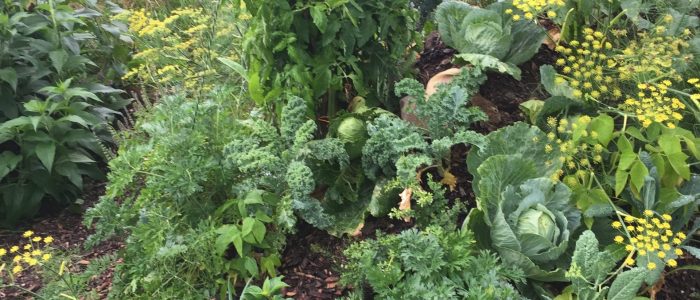


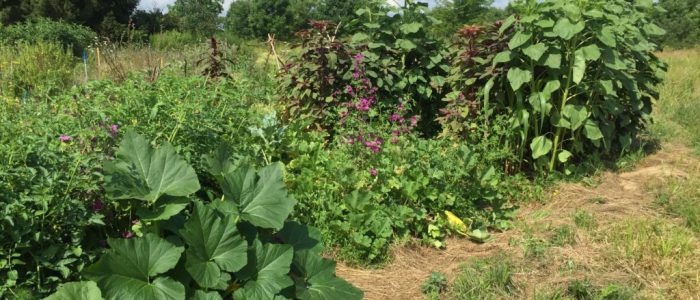
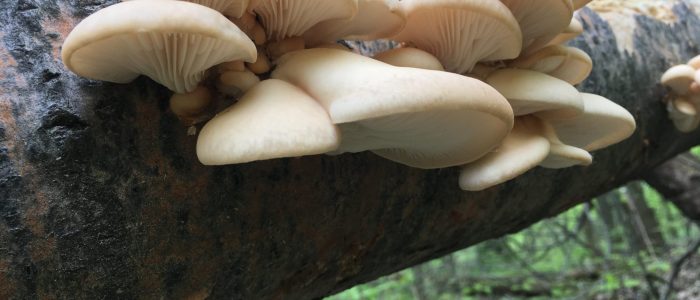
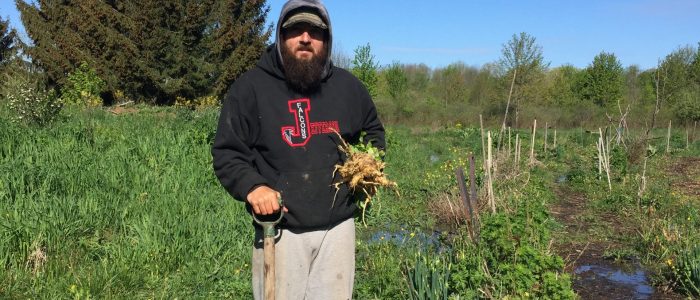
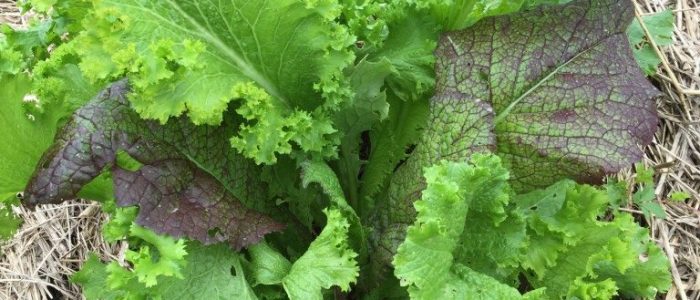



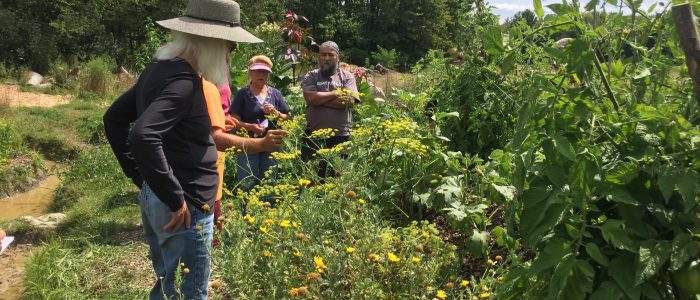



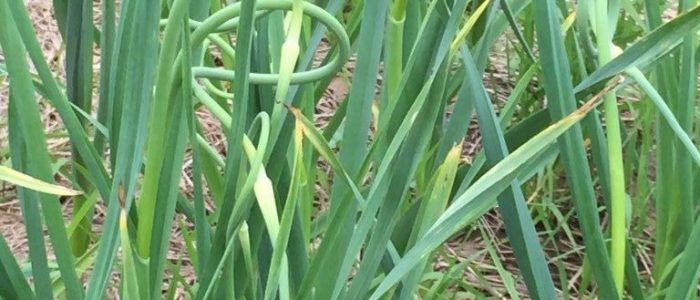
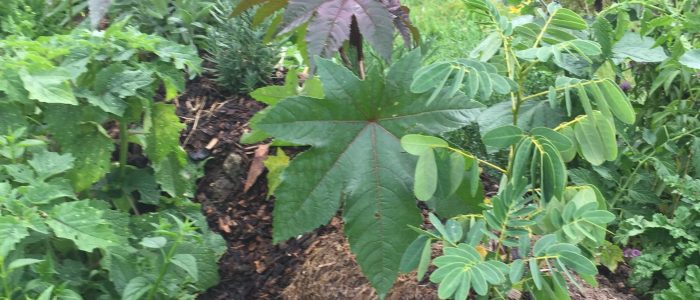
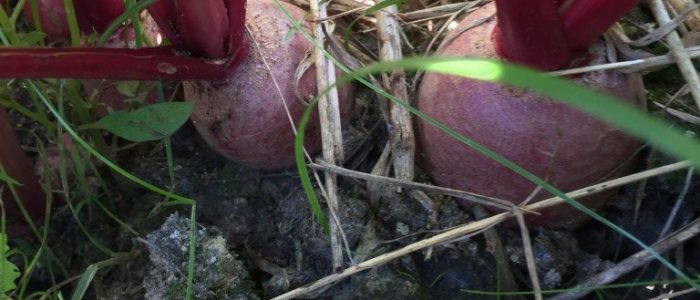





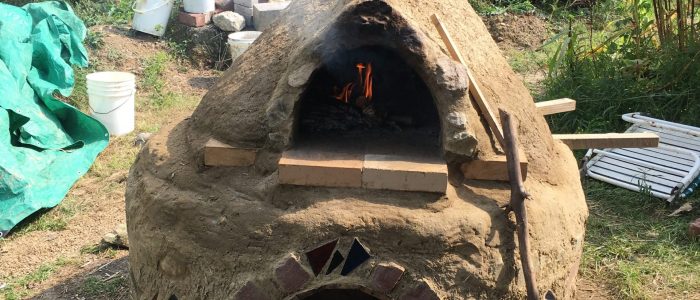


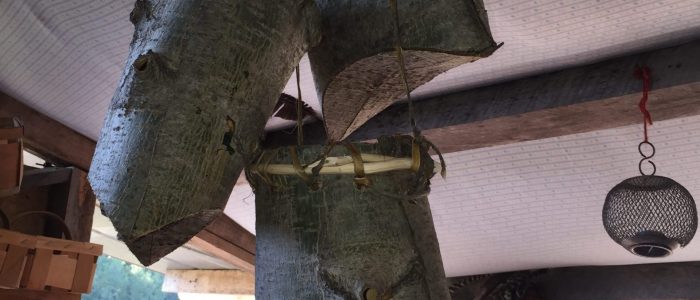
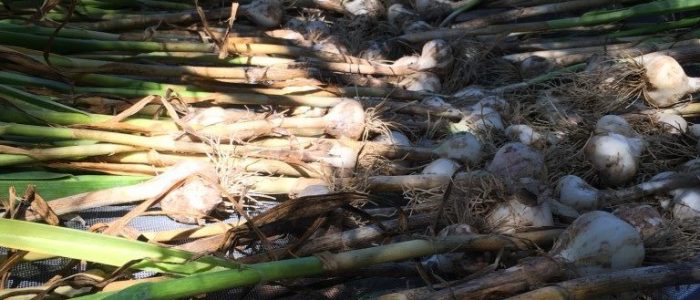
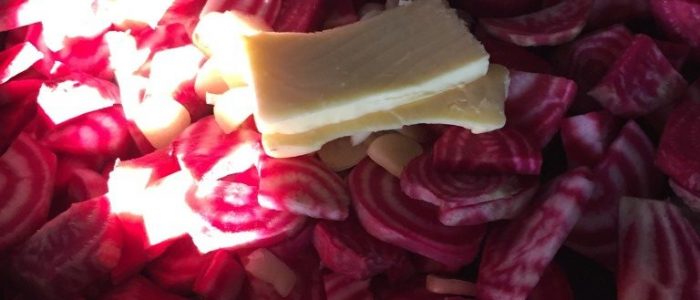
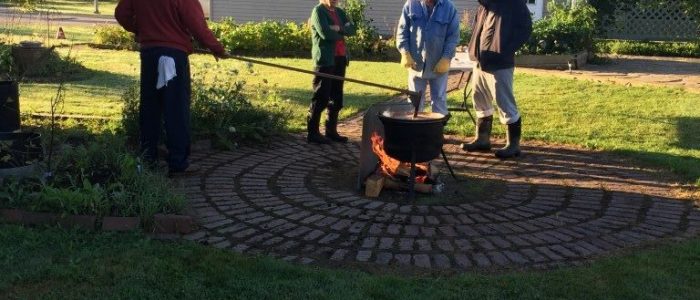
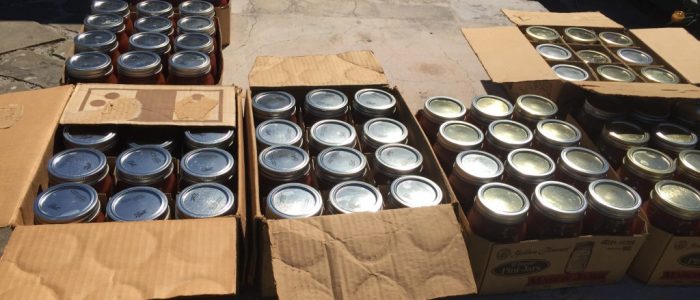

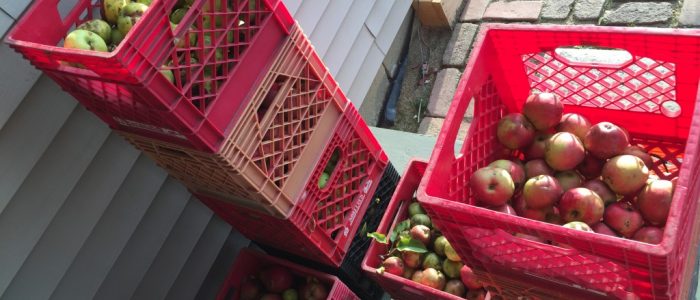
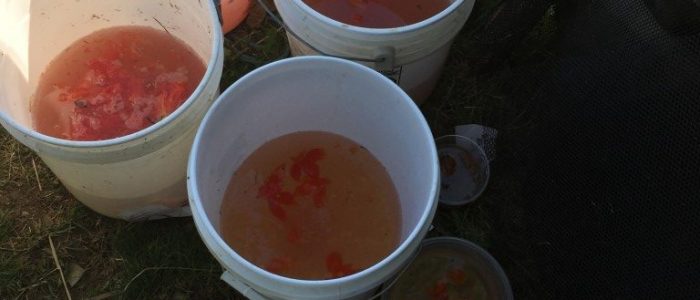
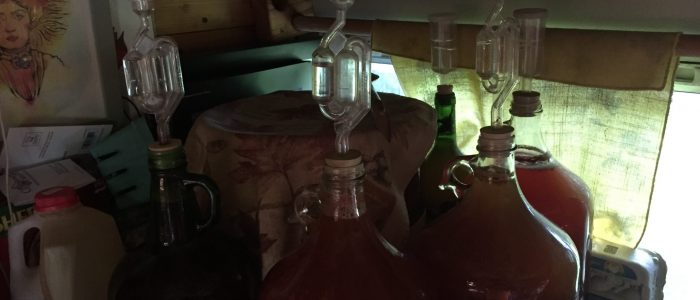
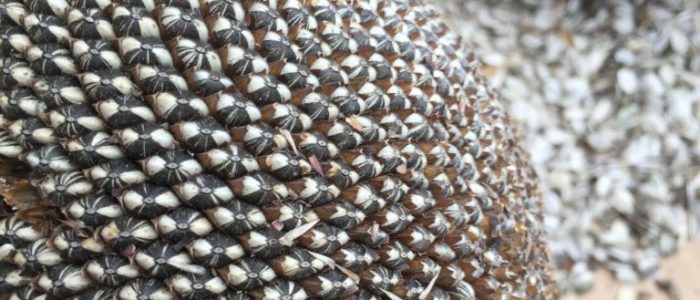



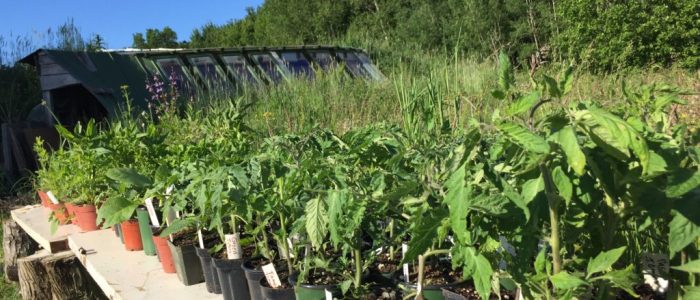
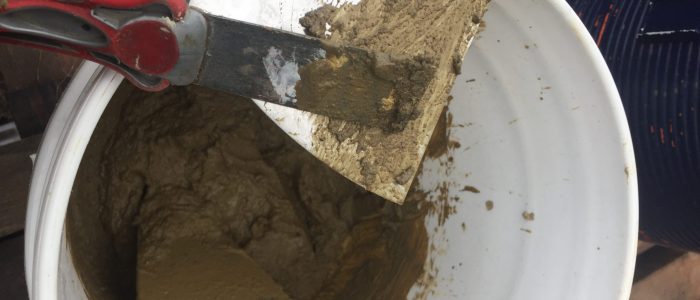


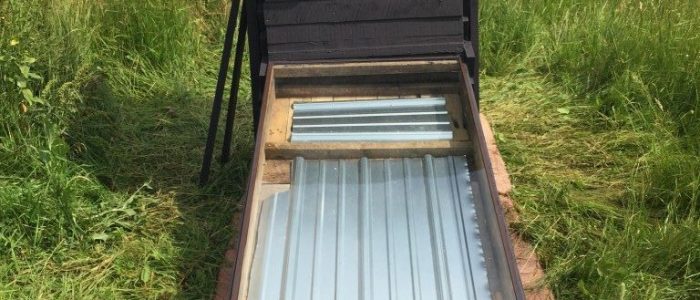

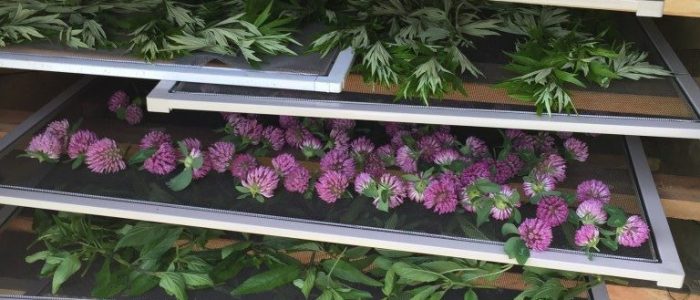

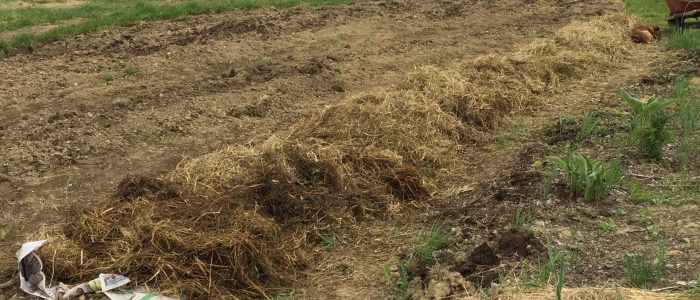



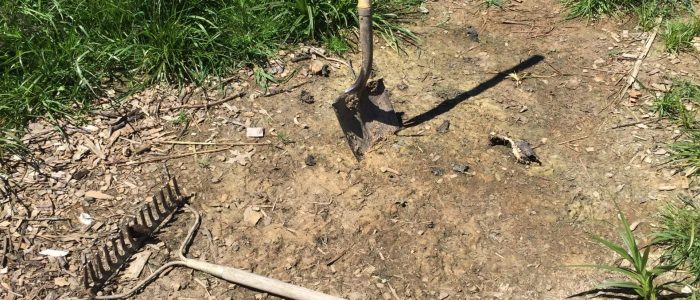
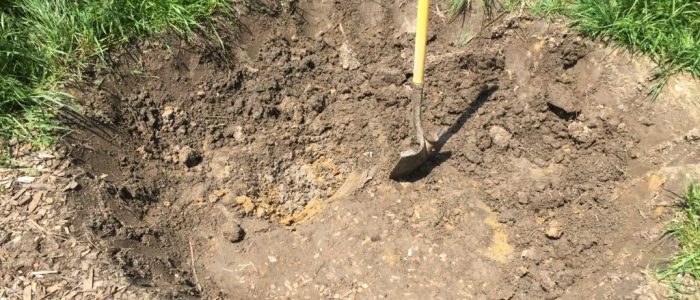




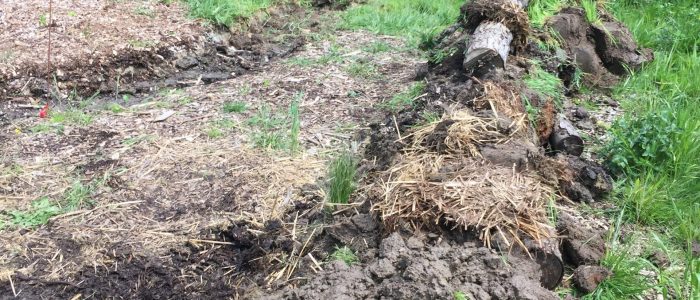
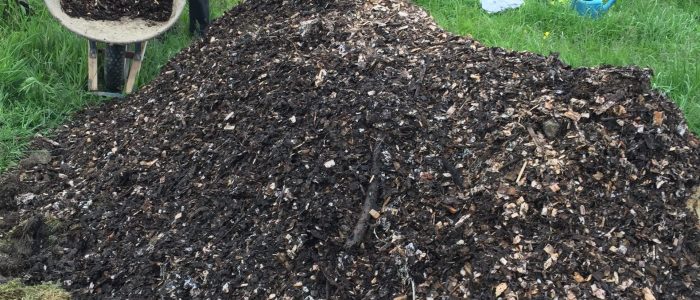
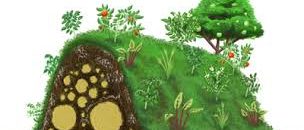






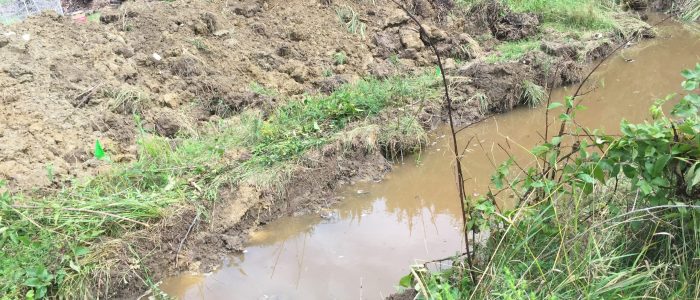
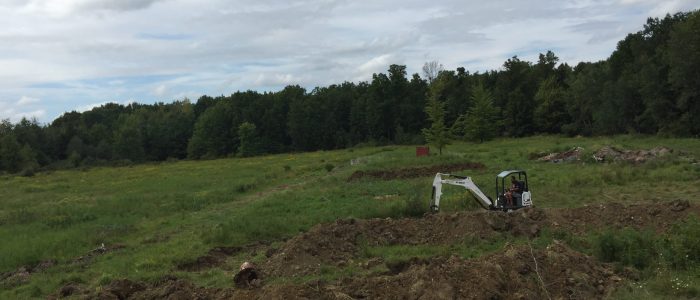






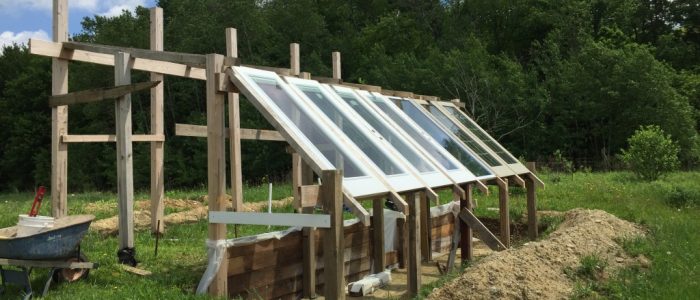
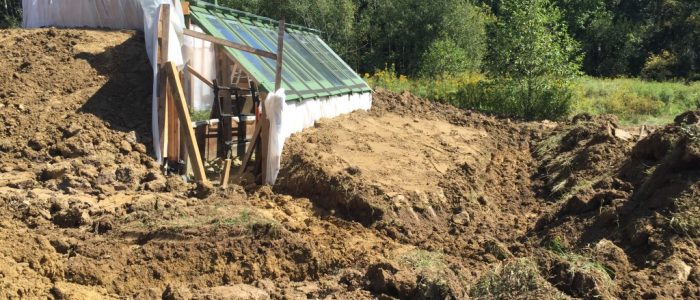
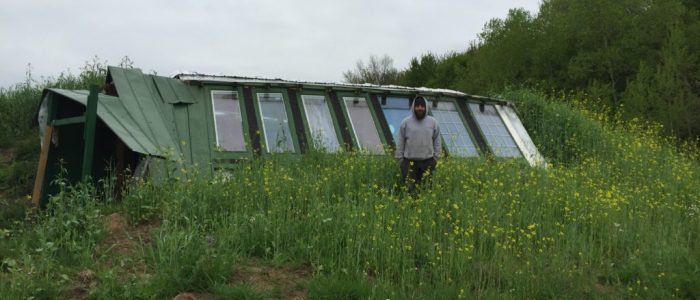
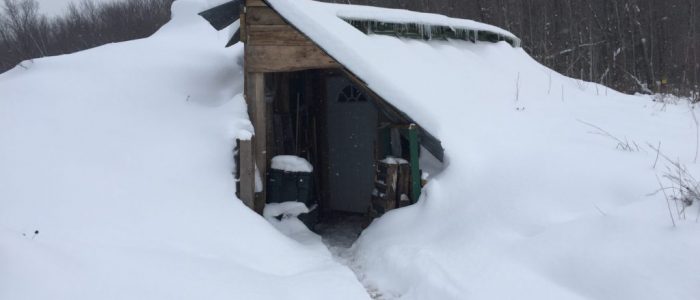
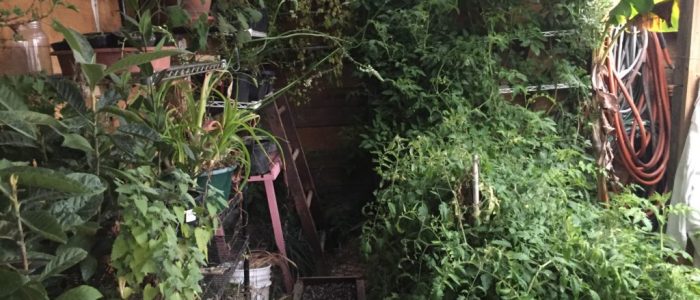
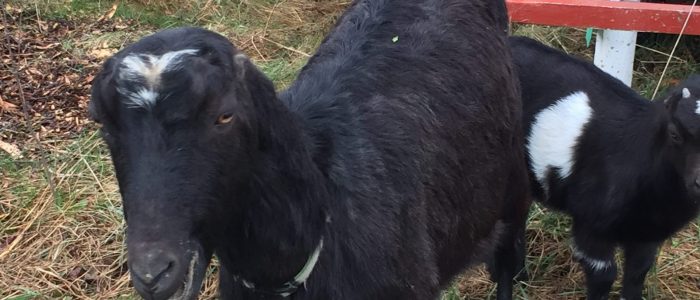
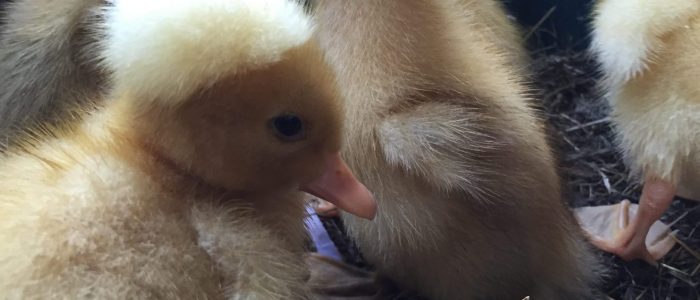


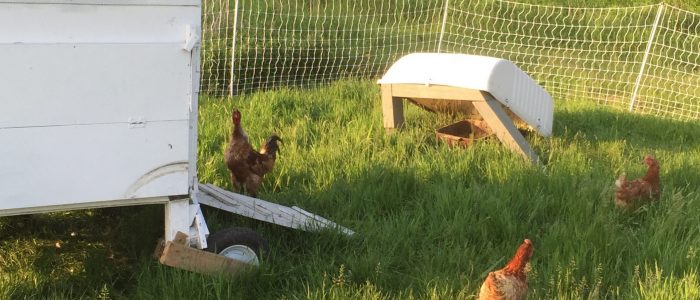


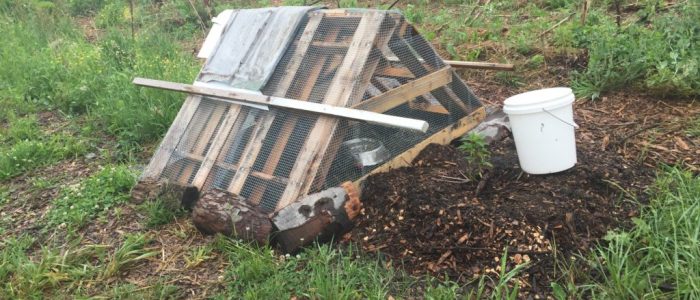
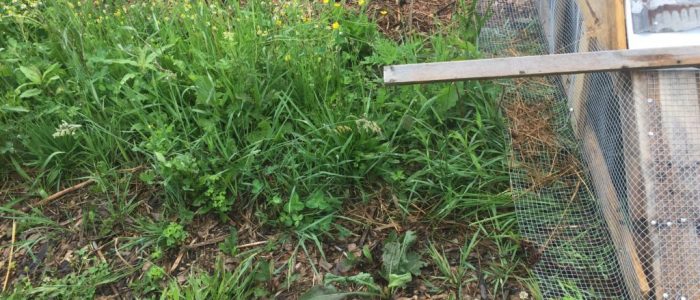


Follow Us!